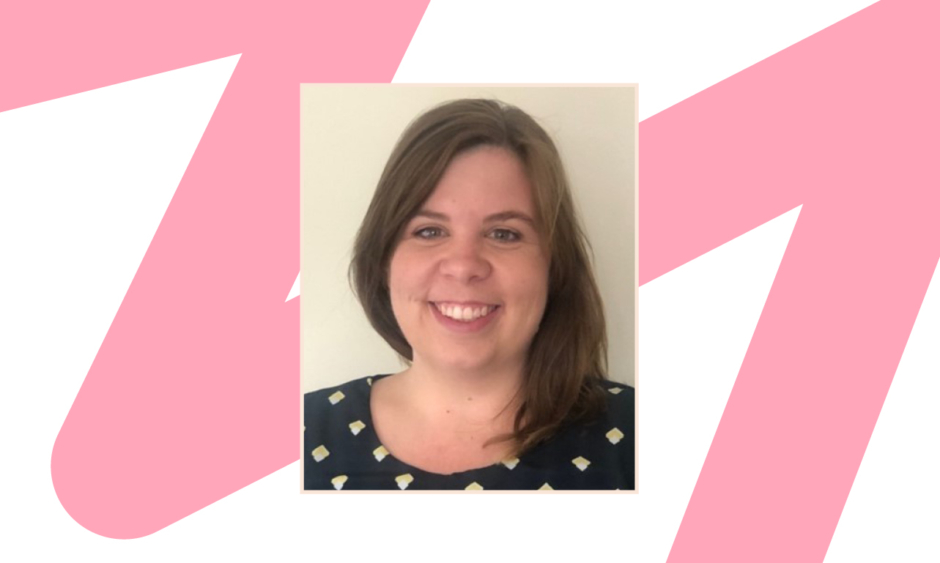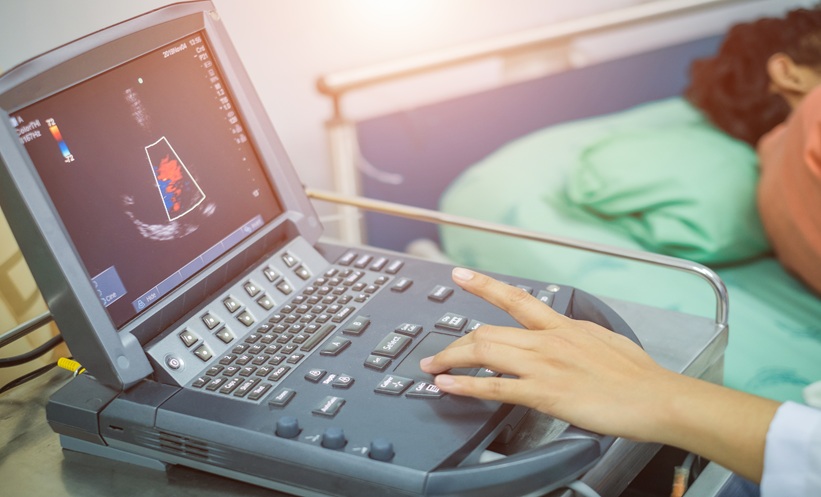Charlotte Scott | Group Leader, Scott Lab, VIB-UGent Center for Inflammation Research, Ghent, Belgium; Associate Professor, Department of Biomedical Molecular Biology, Ghent University, Belgium
![]()
Was there any specific person or event that inspired you to pursue a career in molecular and biomedical biology, particularly with a focus on hepatology?
I have always been curious, wanting to understand how and why everything works. My interest in biology began in secondary school in Ireland, where I had a very energetic teacher, Mr Whisker. This, coupled with some family illnesses and a desire to understand the mechanisms at play, drove me to study Biochemistry as an undergrad, where I fell in love with Immunology. Wanting to further understand the immune system after graduating with my BSc, I was lucky enough to be selected for a 4-year Wellcome Trust PhD program at the University of Glasgow in Scotland, UK. It was there that I met my PhD supervisor and mentor, Prof Allan Mowat, who further inspired and encouraged me down this path. My transition to hepatology was not planned as such, but rather because I followed my favourite immune cells, the mononuclear phagocytes! During my PhD, we were limited in the functional studies we could do, due to the lack of specific tools with which we could specifically target our cell types of interest; for me, intestinal dendritic cells. When looking for a postdoc, I met Prof Martin Guilliams, who had just developed a mouse model to specifically deplete liver resident macrophages (Kupffer cells [KC]). This was a unique opportunity to really be able to specifically target one cell type, and I jumped at it, leading to my transition to hepatic immunology. While these mice did not work out as we expected (the KCs return very quickly after depletion, making it difficult to study their function), these cells quickly captured my attention. For example, their high expression of lipid metabolism-related genes, is what prompted me to start researching non-alcoholic fatty liver disease (NAFLD). Since then, the research has taken a lot of often unexpected, but very interesting turns, and I am very happy to follow the data wherever it leads us. This is the most fun part, getting an unexpected result and trying to understand it!
The laboratory that you lead aims to understand macrophage functional heterogeneity in non-alcoholic fatty liver disease (NAFLD). How extensive is the clinical burden of this disease, and what drives your continued research?
With the current obesity epidemic, NAFLD places a huge burden on society. This is probably best illustrated by the prediction that in just 8 years, in 2030, NAFLD will become the leading cause of liver transplantation in the Western world. This stems from the fact that currently we have no treatment for patients with NAFLD, and often diagnosis comes too late. This is because the initial stages of disease are often asymptomatic, and the procedures required to confirm diagnosis are quite invasive. As mentioned above, we first started to study this because we noticed that the transcriptional profile of KCs was enriched for genes associated with lipid metabolism, leading us to ask whether they would then contribute to NAFLD development. However, we quickly realised that KCs were not the only macrophages present in the fatty liver. Rather we found that these cells start to die and are, in part, replaced by monocyte-derived KCs, and in part by another distinct population of macrophages called lipid-associated macrophages (LAMs). LAMs specifically reside in regions of steatosis and fibrosis, but their precise roles remain unknown. This is our main focus right now, understanding what these different populations do and how they contribute to disease progression. We are looking at this in the context of NAFLD, but also other hepatic injury models where we have also identified these cells (unpublished). If we can understand this, perhaps we can develop methods to manipulate the macrophage populations in patients to improve disease outcome.
Since you were appointed as an associate professor at Ghent University, what has been your proudest achievement?
I have been very lucky since becoming independent, and have been awarded a couple of young investigator prizes recently, and a European Research Council (ERC) starting grant, which allowed me to get the lab off the ground, and for which I am very grateful. Nevertheless, I think what I am most proud of since establishing my independent lab is that I have been able to recruit a team of highly motivated and talented scientists (PhDs, postdocs and technicians) to work with to answer these questions. The fact that these mostly international people saw something interesting in the research questions I was proposing, and were willing to move country and, let’s face it, take a risk on a Junior Principal Investigator, to join my lab is a real honour for me. I’m sure they would be the first to tell you that I still learning about how to be a good Principal Investigator in terms of people management! It’s certainly not always easy and I still have a lot to learn, but to me this is so important. I get as much joy from seeing them succeed as I do from answering the scientific questions. My first PhD student (as main supervisor), Anneleen Remmerie, has just defended her thesis, and while I only played a small part in her scientific successes, this is something that I am very proud of.
How has our knowledge of hepatic macrophages advanced in recent years? Are there any significant updates that we can expect to see affecting clinical practice in the near future?
So I should start by saying that our research is definitely fundamental in nature. I think as a field, we have come a long way in recent years regarding our understanding of which macrophages are present in murine and crucially human liver in different disease settings but right now, what we really lack is functional data. What are all these macrophage populations doing in the different settings? Once we know this, then I think we can start to develop ways to manipulate these cells for clinical benefit, but I don’t think we are there yet!
Where do you feel that you have gained the most valuable experience in your career to date? Was it during your time training in Scotland, your experience working in Belgium, or elsewhere?
I will have to sit on the fence with this one, sorry! I don’t think there is any one place where I have gained the most. I’ve gained a lot of different experience, both during my PhD and postdoc, and the great thing about science is that I am still learning and gaining experience now. All of these experiences I keep with me now to keep moving my lab forward. Moving was illuminating for me, both from Ireland to Scotland from BSc to PhD, and from Scotland to Belgium for my postdoc. I learnt a lot just from looking at things from a different perspective at each location. However, even though I did not move institute after my postdoc to set up my own lab, I have still learnt a lot in these last years, again with much of this coming from diversity of experiences within my team!
You recently co-authored a study that investigated evolutionary conserved hepatic macrophage niches. What are the key findings that this research aimed to demonstrate?
In this publication, we have profiled all of the cells of the liver using spatial proteogenomic approaches (cellular indexing of transcriptomes and epitopes by sequencing, nucleus RNA sequencing, and spatial transcriptomics). We did this in mouse and human in the context of both healthy and obese livers, and have further supplemented this data with healthy livers from five additional species (macaque, pig, chicken, hamster, and zebrafish). This was a massive collaborative effort, led by my lab and the lab of Martin Guilliams, and including Hans Van Vlierberghe’s and Lindsey Devisscher’s teams at the University Hospital Ghent, which enabled us to investigate human livers; and multiple other teams to profile the other species. We also benefitted immensely from collaboration with Wouter Saelens, Bart Deplancke, Robin Browaeys, and Yvan Saeys for the novel bioinformatics algorithms used to analyse the data. By combining all of these techniques, species, and expertise, we were able to identify the conserved macrophage populations in the healthy and obese liver. Moreover, we were able to identify the local environments (niches) and the cell-cell interactions driving the development of these macrophage subtypes, which is crucial if we think of manipulating these cells in the future. This led us to determine that the LAM phenotype is for a large part driven by the presence of local lipid content rather than cell-cell interactions, whereas KCs require BMP9/BMP10 signalling from hepatic stellate cells (through ALK1 on the KC surface) to develop. This allowed us to generate a mouse model which constitutively lacks KCs, by removing ALK1 from all macrophages. Thus, now we finally have a mouse that always remains devoid of KCs, enabling the study of their function.
In 2021, you received a European Association for Study of the Liver (EASL) Emerging Leader Award. Could you please explain what this was awarded in reference to, and the implications of your work that were recognised in this achievement?
The EASL emerging leader award is awarded yearly to young investigators (<40 years) based on their international liver research achievements to date. I was really honoured to receive this award last year. While I do not know the precise reasons the selection committee chose me for this award, personally I feel this award is reflective of my collective work on understanding liver macrophages both during my postdoc and since launching my own independent lab. During my postdoc, one of my most exciting findings was that despite being largely of embryonic origin in the adult liver, bona fide KCs can be generated from bone marrow-derived monocytes if the niche becomes available (e.g., upon depletion/loss of the macrophage population). This led us to put forward the macrophage niche hypothesis, stipulating that there are a restricted number of niches for macrophages in any given tissue, and that it is the local environment in these niches which govern macrophage phenotype but not origin, as had been previously proposed. This hypothesis then led us to investigate the signals regulating KC development, and led us to determine a role for the transcription factors Zeb2 and liver X receptor alpha (LXRa) in maintaining KC identity. Moreover, this work led us to ask what happens to the macrophages when the niche is altered due to injury and inflammation. This led me to start my independent lab, which focusses on hepatic macrophage functional heterogeneity in inflammation and injury. In terms of NAFLD, we determined that KCs were lost from zones of steatosis and fibrosis, which were then instead populated by the LAMs. This work which was published back-to-back with two similar reports demonstrated that we need to distinguish between these populations when studying macrophages functions in NAFLD.
Finally, what advice would you give to a younger self, or to an aspiring young clinician?
Follow the data and the questions that interest you the most, and enjoy it! If you had asked me 10 years ago what would I working on today, I am confident I would not have said NAFLD; I’m not even sure I would have predicted I would be working on the liver! However, this is where the data led us, and I’m very grateful to be here and working on this topic right now. Science is not easy, there are ups and downs, but by following the data, you can go places you never even thought of! It’s hard work, but as long as you enjoy what you do, it’s so worth it!








